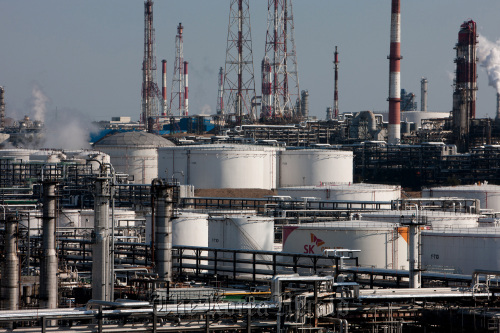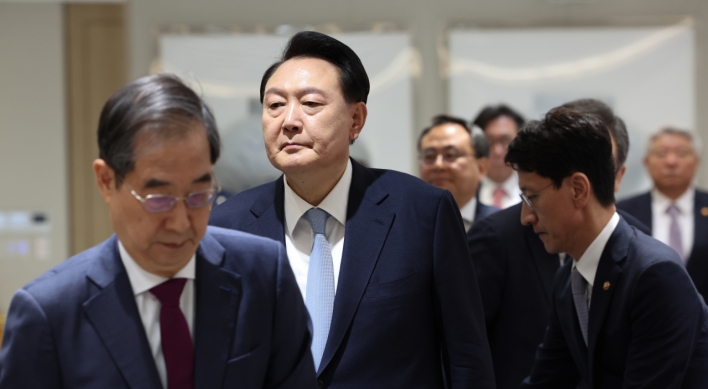With the Korea-EU Free Trade Agreement now in effect, Korea’s manufacturing sector is set for a significant rise in exports to the region.
The pact, formally signed in October, went into effect on July 1. As a result, tariffs placed on 11,261 items produced in Korea and 9,842 items produced in the EU will be removed over seven years.
According to a report compiled by 10 think-tanks, including the Korea Development Institute, local manufacturing industries including the automotive, steel, electronics and petrochemicals industries will see their exports to the region increase by an annual average of $2.52 billion over the next 15 years.
While European manufacturing sectors will also benefit from the pact, their exports to Korea will increase at a slower rate, pushing up Korea’s trade balance with the EU for manufactured goods further into the black.
In the report, the think-tanks estimated that European exports to Korea will see an average annual rise of $2.125 billion over the next 15 years.
With the exception of the automotive industry, which is widely projected to be the biggest beneficiary of the pact, Korea’s electric and electronics industry is expected to see the biggest rise in exports to the region.
The pact, formally signed in October, went into effect on July 1. As a result, tariffs placed on 11,261 items produced in Korea and 9,842 items produced in the EU will be removed over seven years.
According to a report compiled by 10 think-tanks, including the Korea Development Institute, local manufacturing industries including the automotive, steel, electronics and petrochemicals industries will see their exports to the region increase by an annual average of $2.52 billion over the next 15 years.
While European manufacturing sectors will also benefit from the pact, their exports to Korea will increase at a slower rate, pushing up Korea’s trade balance with the EU for manufactured goods further into the black.
In the report, the think-tanks estimated that European exports to Korea will see an average annual rise of $2.125 billion over the next 15 years.
With the exception of the automotive industry, which is widely projected to be the biggest beneficiary of the pact, Korea’s electric and electronics industry is expected to see the biggest rise in exports to the region.

According to the report, Korean electrical equipment and electronics makers will see their exports to Europe rise by an annual average of $394 million in the next 15 years.
The report said that while most electrical and electronics equipment is traded tariff-free under the Ministerial Declaration on Trade in Information Technology Products of 1996, products that do not come under the agreement such as digital household appliances, LCD modules and batteries will gain price competitiveness over Chinese and Japanese products in the European market.
However, the country’s market for such products is expected to see a larger increase in imports from Europe tipping the trade balance for the industry into the red, meaning smaller Korean companies could be negatively affected by the deal. The report estimated that imports of electrical and electronics equipment will rise $430 million each year.
“EU-made products including some electronics parts could take hold on the local market, raising the possibility that negative effects, centered on small- and medium-sized enterprises, will occur,” the report said.
The fates of the petrochemicals and chemicals industries are set to vary greatly in the coming years.
While the FTA with the EU is unlikely to prove to be a massive booster for the country’s petrochemical industry, the pact is expected to provide a chance for local refiners to diversify their export destinations.
“Removal of the tariffs will give our products a price advantage, but as the volume directed to the region is relatively small, it’s unlikely to have much impact on our overall sales,” a local refiner’s official said.
“But the FTA, I think, will help Korean firms in opening up new routes to Europe, and allow us to reduce dependence on the Chinese market in the long term.”
In contrast, the country’s chemicals market is projected to see a massive surge in European imports.
According to the 10-think-tank study, imports from the region will rise at an annual average of $290 million over the next 15 years, while imports will rise by a much lower $53 million over the same period.
Machinery makers are also set for similar changes, with the rise in imports projected to outpace increases in exports by more than $200 million each year.
The pact, however, will not bring noticeable benefits for the local shipbuilding industry, one of the country’s top exporters.
According to government data, the value of ship exports came in at about $49.7 billion last year. The figure was the second largest after that for semiconductors, which came in at over $50 billion.
“Ships are already traded tariff-free, so the FTA won’t have much effect on shipbuilders,” a Hyundai Heavy Industries official said. He added that construction equipment such as excavators are also traded without tariffs. However, he said that as parts for such equipment are subject to import tariffs, the company is expecting its parts lineup to gain price competitiveness in the European market.
“In relation to the company’s overall revenues, the FTA will have relatively little effect as the proportion of our sales accounted for by products that will become tariff-free is small.”
The country’s steel and nonferrous metal industries are facing a similar situation.
According to officials at the country’s largest steelmaker POSCO, most steel products have been traded without tariffs since 2004, making the trade pact of little use in boosting exports to Europe.
The industry, however, is expected to gain indirect benefits in terms of overall sales, as industries with large steel consumption including the automotive and electronics industries are projected to see sales increase in Europe.
However, with European firms still having the lead over local firms in nonferrous metals and some steel products that are subject to tariffs, imports from Europe are expected to increase by a much larger margin than Korea’s exports.
According to the study, Korean steel and nonferrous metal exports will respectively increase by an annual average of $7 million and $10 million over the next 10 years.
By comparison, steel imports should increase by $43 million while nonferrous metal imports are expected to grow by $47 million over the same period.
By Choi He-suk (cheesuk@heraldcorp.com)









![[KH Explains] How should Korea adjust its trade defenses against Chinese EVs?](http://res.heraldm.com/phpwas/restmb_idxmake.php?idx=644&simg=/content/image/2024/04/15/20240415050562_0.jpg&u=20240415144419)








